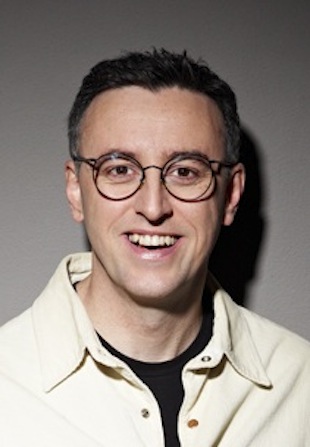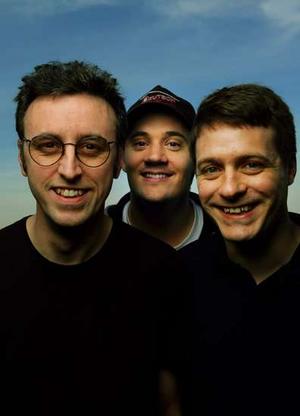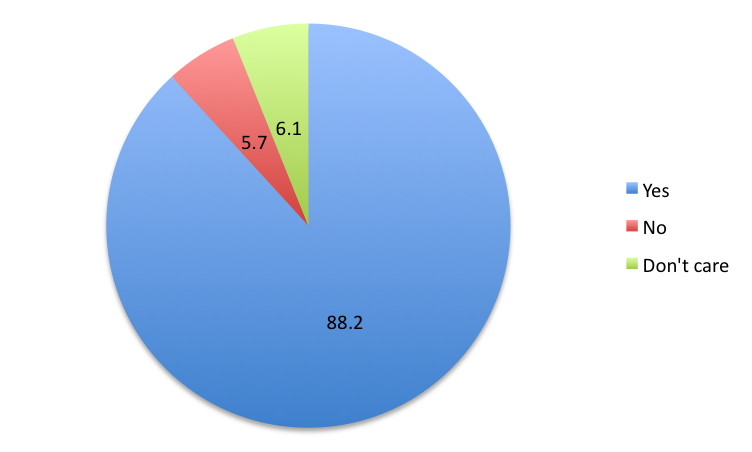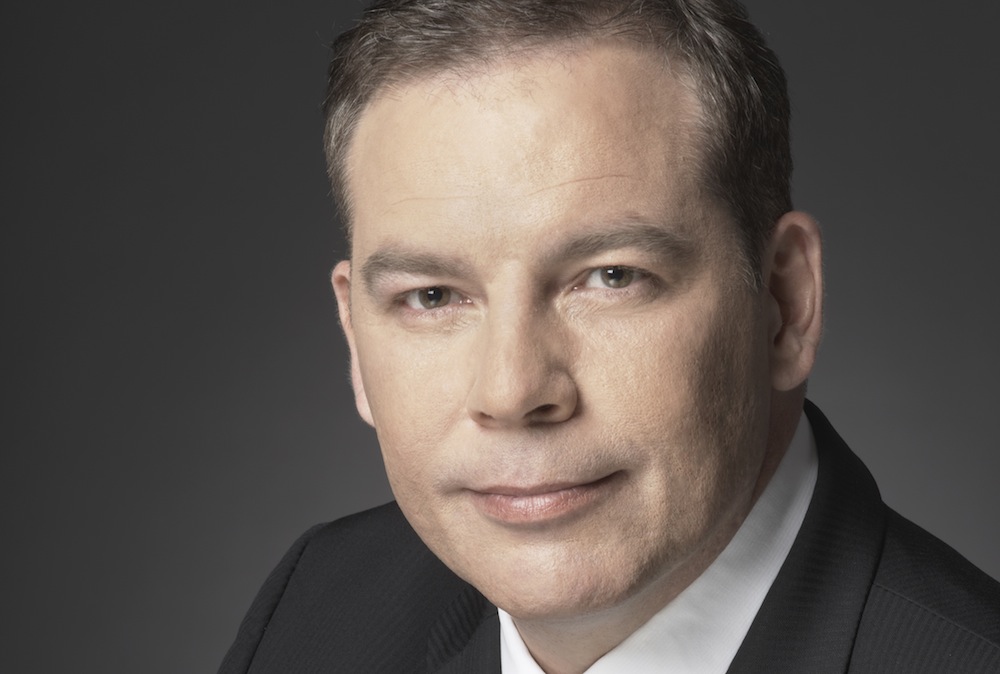Tony Martin Tuesdays

“The Haphazardly Handpicked ‘Least Sub-Optimal’ Bits from Tony Martin Tuesdays”
(yes, this is our version of a rehashed Saturday morning “Best of…” show – Scott Muller)
Tony Martin Tuesdays prompted an astonishing amount of comments and controversy throughout July. Here we highlight the “Best Bits” – focusing on Tony’s words of wisdom that may provide clues for aspiring comedians and radio presenters – while revisiting the story behind the legendary Comedy Caravan atop the Fox FM roof, why sketch shows are always soooo ‘last decade”, and the little known ratings facts about ‘Get This’ which generated so many comments …
Note: you can read the full interview here, in part 1, part 2, and part 3.
Editor’s Note:
Tony Martin’s multiple successes with the D-Gen, Martin-Molloy and Get This makes him one of the most successful FM radio hosts of all time – spanning different networks, decades, dayparts (breakfast, drive, mornings, afternoons).
Tony: The thing about the shows I’ve done is that because I’d done virtually every job in radio before I did the comedy shows, I kind of knew what you could do. With Martin-Molloy, as long as the show was popular, we could pretty much do anything we wanted.
If you want to do comedy on commercial radio, you really have to learn the ropes. With Martin-Molloy, we didn’t have a “chaperone” (an anchor forced into the show). Not having an anchor worked on Martin-Molloy because I could do all of that stuff, and I didn’t mind being “the jock”.
Scott: There’s not much in the way of pure sketch shows on radio now…
Tony: Every decade I’ve done a show with sketches. In the ‘80s sketches were “sooo ‘70s”. In the ‘90s sketches were “sooo ‘80s”. And in the 2000s sketches were “sooo ‘90s” … etcetera. I think the word sketch has a bad connotation (with some management).
What it comes down to, though, is sketches just take so fucking long.
I remember one took three days! And it ran one minute fifty! It just doesn’t seem like sensible behavior. But it’s so satisfying because you get to use all the bells and whistles and you get a lot of plays out of one great sketch.
 Sketches don’t have to be “man comes into a shop”. Sketches can be piss-takes of the station’s programming and promos.
Sketches don’t have to be “man comes into a shop”. Sketches can be piss-takes of the station’s programming and promos.
Then, with “Get This” I wanted it to be a lot looser – because Martin-Molloy was all scripted. “Get This” was planned in point form, leaving lots of room to go off on a tangent. And when it gets really messy and sounds like it’s off the rails, you want to suddenly go ‘Bang!’ – with a sketch that you’ve spent three days making. So the contrast of going almost off the rails, then the segment being redeemed with a sketch – going from extreme messiness to extreme organization – gives the listeners the feeling of “Oh, they knew what they were doing all along”.
To me the most important thing about a radio show is the tone – what’s the tone of the show? What can, or can’t, they do? And we used to call them ‘Jetpack Shows’. We could be sitting there talking to the guest quite seriously, then say “I have to put money in my meter” – and then there’d be the sound of a jetpack, an open window, the sound of me flying down into the car park, hearing an argument (with the parking inspector) way off in the background, then the sound of me flying back up into the studio and continuing the interview with the guest.
You’re creating a tone for the show. With Martin-Molloy we didn’t have massive arguments about that kind of thing, but occasionally there would be a guest who wouldn’t quite fit into the world of our show.
At the same time, the ‘internet era’ has brought more (honesty) … people can smell bullshit. Everything is out in the open now. Especially young people, they like people to be honest, talk about their faults. It’s great comedy, you can ‘get in first’ – it’s like when the school bully is coming at you – beat yourself up before he gets to you. The person who says the greatest truth has the last word.
We would do that on our shows. On ‘Get This’ we would discuss the behind-the-scenes discussion about a new, big feature. It was popular with listeners but not with managers. We would just talk about it on-air – and I think if you’re having a go at others, as we often would, it sounds obnoxious if you’re not simultaneously being rigorous about yourself, your own incompetence. If a sketch had a terrible impression in it, we would play it over and over and take the piss out of ourselves.
And in all of the shows I’ve been on, our only reason (for doing anything) was because it would be funny. For example, with ‘Get This’, Ed erased a whole football game (from the playout system)! It became a running joke.
Scott: Tell us how the legendary Comedy Caravan came to be hoisted up onto the roof top out the back of Fox FM (in St Kilda Road) …
Tony: I get asked more about that Caravan than about the show itself! There are various stories about that shed – it’s sort of gone into legend.
During that period (1995) Triple M was about to move into the floor below Fox FM. There was a whole floor with nothing in it, except a desk and a pile of papers – Peter Harvie’s office – who I consider to be a genius of radio. And Mick and I had no room on the Fox floor to work so we’d go down there.
Anyway, as Triple M moved onto the floor below Fox FM, suddenly there was no room. (So) Brad March arranged for a workman’s hut to be craned up on top of the Fox FM building. So the real reason for the Caravan was that there was simply no room left for us to work.
 I remember doing sketches with (audio production engineer) Vicki Marr (pictured left), and we’d still be mixing them down as the show started! I would run around (from the back of the Fox rooftop to the front of the rooftop) into the station, into the studio, we’d have 3 minutes 50 of song left, and 3 minutes 40 of the sketch left to mix! So we didn’t have time to finish it properly – we had to whack a mic on the floor and lay down footstep sound effects live!
I remember doing sketches with (audio production engineer) Vicki Marr (pictured left), and we’d still be mixing them down as the show started! I would run around (from the back of the Fox rooftop to the front of the rooftop) into the station, into the studio, we’d have 3 minutes 50 of song left, and 3 minutes 40 of the sketch left to mix! So we didn’t have time to finish it properly – we had to whack a mic on the floor and lay down footstep sound effects live!
Scott: One memory I have of Martin-Molloy above all other shows I’ve been involved in is the level of prep and attention to detail that went into the show…
Tony: Yes, but at the same time – nothing is as hard to listen to than something that sounds overworked. Commercial radio always sounds best when it sounds casual.
(As a listener) you don’t want to feel the weight of the preparation. The art of it is to spend ages preparing it – then present it, casually and naturally, as “here’s something that occurs to me…” – trying to give it the feeling of ease that someone like Lee Simon does naturally.
With Martin-Molloy, our (over the top) rants were confined to the first half hours – then it was more casual after that. By the last half hour it got pretty silly.
But really you don’t want people to feel anxious and tense listening. Not every word was scripted. Having done the preparation allows you to be relaxed so you’re not worried (about what you’re going to do next).
On ‘Get This’, the best bit, the funniest bit, and almost always the most popular bit – and it was never on any of the podcasts – was the bit out of the ad-break in the first hour. We would always pretend we were playing that song – say it started with a drum, we would pretend we were playing it – and we would never prepare that bit. (During the ads we would say) “Play me the first 30 seconds of the song – what can we say about this?”.
Scott: On the other hand I remember that with Martin-Molloy each of you would do around 70 hours prep per week for the 10 hours on-air.
Tony: I call it ‘Going to War’. It’s where you give over your whole life to the show. When you’re doing anything, having a conversation, anything at all – you’re always thinking “how can I incorporate this into the show?”
Scott: The radio shows you’ve done have delivered big shares far above station average. Martin-Molloy was spectacular – enormous ratings that kind of set the stage and high expectations for many drive shows that followed. And the D-Gen’s success is legendary. But what few people know is that “Get This” was just as big a ratings success.
Tony: Yes, when ‘Get This’ was on the average for 2MMM mornings might be around a 6% (share of all people 10+) and afternoons about the same – but there’d be a huge spike 11am-1pm when our nonsense came on…
Scott: If I can use a football metaphor … this chart shows the scoreboard for Triple M in Sydney and Melbourne at different stages of the game – comparing mornings and afternoons with “Get This” (Mon-Fri 11am-1pm for Surveys 4-6 of 2007).
For the past week we have been asking if you think Tony should be back on radio ? Here's another graph with the results, no surprises really…..

Thanks to Tony for taking the time to catch up and talk at length and so candidly – and a big thanks also to Nikki Hamilton-Cornwall for all her help with getting the facts right.
All radio ratings statistics are from Nielsen.
|
Scott Muller is Director of MBOS Consulting Group, a media management and consulting firm. |





